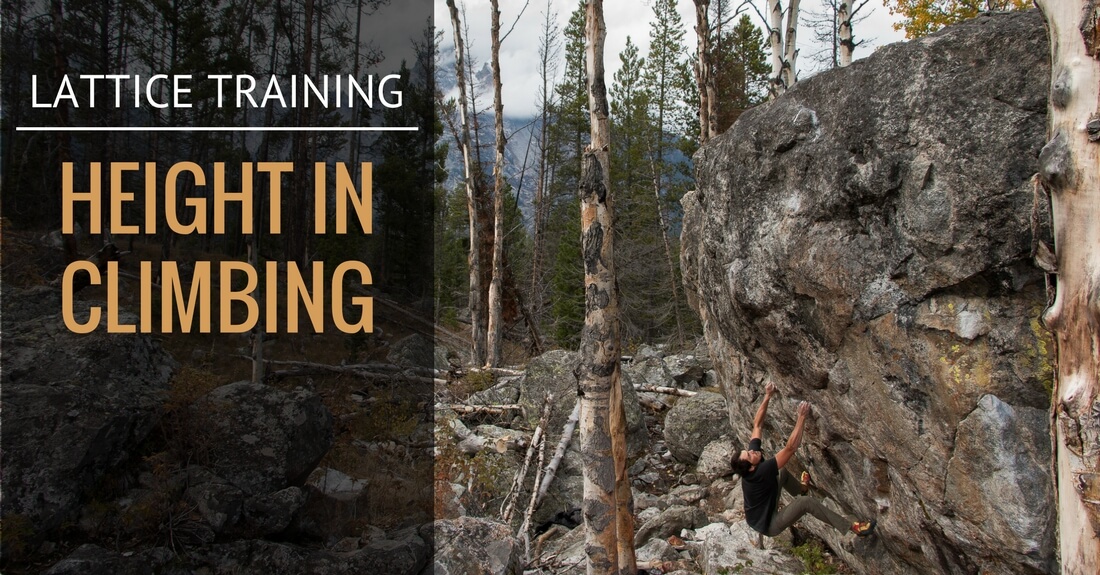“It’s easy for you because you’re tall.”
Spend time at any crag, bouldering area, or gym and you’ve probably heard this said. While it’s true that sometimes being tall can help, there are also times where it seems like being shorter is actually more beneficial. Although none of us can do anything to change our height, it is interesting to look at just how much of an advantage or disadvantage being tall is in climbing.
This is exactly what the team at Lattice Training is trying to figure out by cross referencing the data they have collected during their training assessments with the height of the climbers.
“Height has always been a contentious topic in climbing. And understandably so! There’s nothing quite so frustrating as watching someone reach past a move you’ve been struggling with for hours!”
“But how much of an advantage is it in practice? Being tall might not necessarily be an advantage as keeping body tension is trickier on steep problems, and of course height is closely correlated with weight which means taller climbers will on average be heavier than shorter climbers.” – Lattice Training
Height in Climbing
As we said above, there’s nothing you can do to change your height. However, their findings are still interesting especially if don’t just focus on whether or not its good to be tall, but look at the why. In other words, while we all know height affects climbing performance, it is interesting to see data showing exactly how it does so.
Click through below to read more about what the Lattice Team is finding out!
Full Article: Lattice Training – Height in Climbing

(photo courtesy of Matt Pincus | @mpincus87)
Other Articles You Might Like:
- Climbing Technique for Shorter Climbers
- Exercises for Shorter Climbers
- TBP 038 :: Tom Randall on His Thorough and Scientific Training Methods
- Lattice Training: Power Endurance




I have tried to investigate the role of both height and weight for rock climbing simultaneously using a statistical approach. While being taller clearly seems to be a disadvantage, this seems to be entirely driven by the higher absolute weight of taller climbers.
See here
http://climbstat.blogspot.com/2018/12/being-tall-and-carrying-more-weight-are.html
I’ve definitely seen it go both ways. I’m not super tall but I often find myself being able to reach statically where shorter climbers must use creative or completely dynamic moves to advance. I will say poor route setting in gyms can be overtly biased towards taller climbers, I don’t think anyone whose been climbing for a long time would argue this. At the same time, I literally can’t even count how many times, I’ve ended up in ridiculously cramped positions where feet and hands are close together and put a taller climber into a very tedious position. In observations this seems to to occur more on technical and friction routes where the idea of dynamic movement becomes laughable, and the thought of stepping up to a mid section height becomes equally laughable. I do think it brings up a good point on how grading based on height can be very subjective in either direction though. If someone is forced to use some diabolical hold or just friction because of their height, or conversely the available terrain puts them into very cramped body positions, it can significantly increase the grade of the climb.